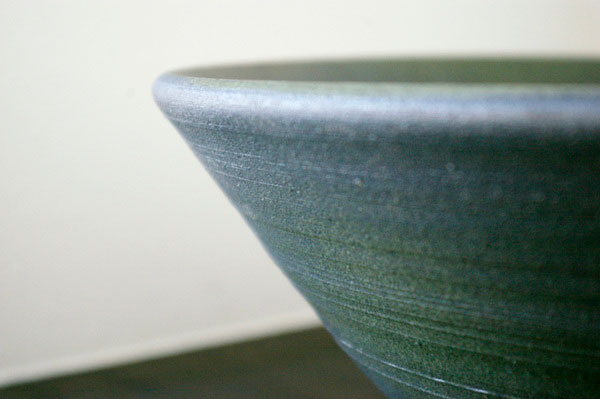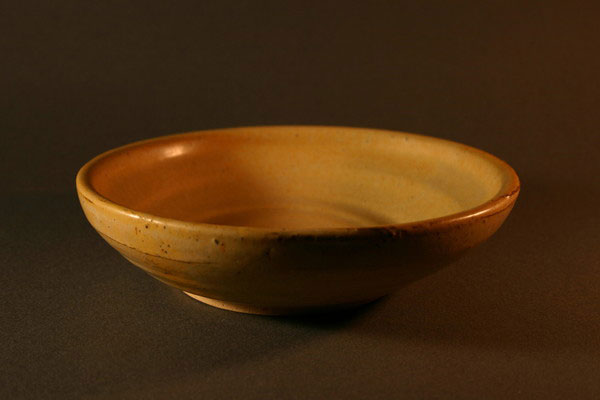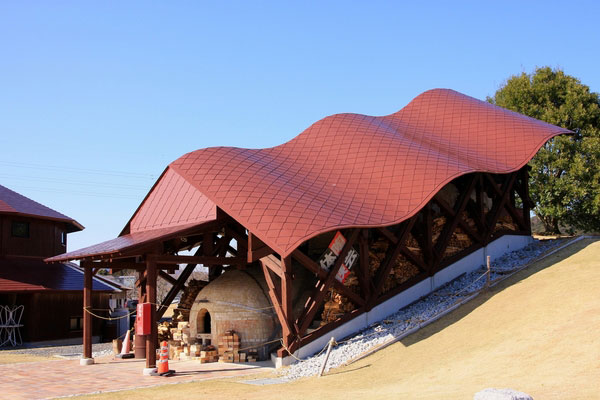
- Ceramic
- Ibaraki
Kasama ware Kasama yaki
Tradition meets freedom in
useful and strong Kasama clay
Description
What is Kasama ware ?
Kasama ware (called Kasami yaki in Japanese) is a form of porcelain produced in the area around the city of Kasama in Ibaraki prefecture. This porcelain has long been considered a traditional souvenir of visiting Kasama Inari shrine (one of Japan's three major Inari shrines*). Kasama ware has a strong finish which is produced with fine grained clay called gairome clay. Because of its strength and stain resistant feature, it is used for kitchenware such as water jugs, tea canisters and other daily used items. As gairome clay has a high iron content and turns brown after firing, it is more common to use decorating techniques such as dripping or overlaying glaze. In addition to a great diversity of decoration techniques, the production area is very open-minded, which encourages artisans to develop their individuality on Kasama ware pieces without being constrained by tradition and formalities. Today, Kasama ware is used in flower vases, household ornaments, and art pieces. Potters continue to maintain a high level of quality that has been passed down ever since the Edo period (1603-1868).
*Inari shrines are a type of Shinto shrine dedicated to the god of rice, Inari. The messenger for Inari is a fox.
History

Kasama ware production begun in the Edo period (1603-1868), when a Shigaraki ware potter named Choemon taught pottery to Hanuemon Michinobu KUNO, the head of the Hakoda village (current Kasama city). Kasama ware then developed with the protection of the Kasama domain. Many bottles and jugs were produced in the beginning, but the strength of the potter's clay led to mass production of daily necessities such as tableware. There was also a remarkable increase in the number of potters. After World War II, potters pursuing a new ethos were brought together from all over the country. The Ibaraki Prefectural Ceramics School was established, and they put much effort into training potters. This led to an increase in the number of Kasama ware potteries even though plastic was becoming more widespread. Kasama ware has a long history and while many traditions have been handed down, there are hardly any old customs or practices. Today, potters produce various items from affordable daily necessities to new works of art. As potters continue to work, modern technologies can be created and passed down to future generations.
General Production Process
- 1. Mining of clay The production of Kasama ware starts with the excavation of clay. The notable feature of Kasama's clay is the iron that it contains. There are several types of clay, but Kasama clay and gairome clay are mainly used.
- 2. Clay production The excavated clay is mixed with water and kneaded. The clay is prepared with a machine or by elutriating, which is dissolving the clay in water and collecting and drying the sediments. If there is a lack of care in this process, all subsequent steps will be affected, so it is essential to pay close attention at this stage.
- 3. Chrysanthemum kneading This process removes air to make the clay uniform. Chrysanthemum kneading is known as such because the kneaded clay resembles a chrysanthemum.
- 4. Forming Using the potter's wheel is a popular way of forming. However, it is more difficult than it seems and is said to require ten years of practicing. Aside from using the potter's wheel, there is also press molding and hand forming. The forming method is changed depending on the item being produced.
- 5. Decorating the base A design is applied to the non-baked base material. While the base material is still soft, tools such as bamboo are used to carve patterns. Methods include mud application and brushing.
- 6. Drying
Drying requires caution, because if the pieces are dried to varying extents this may result in cracks.
Methods of drying include drying in the shade, in the sunlight, or with hot air.
- 7. Bisque Once the pieces have been adequately dried, they are placed inside the kiln and are fired at about 800℃ (about 1472℉) for approximately ten to fifteen hours. The porcelain will not return to clay after the bisque, so it is important to load the kiln after carefully checking the pieces.
- 8. Underglaze decoration After the bisque firing, patterns are painted on the pieces. Iron or cobalt may be used for the painting. The color will change depending on the glaze that is applied on top, so the depth and other elements of color are adjusted by looking at the balance with the glaze.
- 9. Glazing After the bisque firing and underglaze decoration, the pieces are glazed. There are various types of glaze, including black and white matte glaze, and these are used depending on the type of product. A wide variety of different glazes can be produced by changing the raw materials. There are also various glazing techniques such as soaking or dripping, but typically this work is carried out by hand.
- 10. Glost firing Before going into the process of glost firing, the same preliminary check for scratches that were carried out before the bisque are repeated. If there are no problems, the kiln is loaded. The pieces are then fired at around 1250 to 1300℃ (about 2282℉ to 2372℉) for approximately 20 hours. They must be carefully fired.
- 11. Finishing and inspecting Once the pieces have been fired without any problem, they are removed from the kiln and finished by smoothing the bottom of each piece. Finally, pieces are checked to confirm that there are no cracks or splits, and pieces that have passed the inspection are treated as finished articles.
Where to Buy & More Information
Kasama Kogei No Oka

-
Address
-
Tel.+81-296‐70‐1313
-
ClosedMondays (open if Monday is a holiday and closed on Tuesday), around the New Year
-
Business Hours10am to 5pm
-
Website
See more Ceramic
- Imari ware/Arita ware
- Hasami ware
- Kutani ware
- Mashiko ware
- Shigaraki ware
- Bizen ware
- Hagi ware
- Koishiwara ware
- Mino ware
- Tobe ware
- Tokoname ware
- Karatsu ware
- Kasama ware
- Satsuma ware
- Iga ware
- Mikawachi ware
- Agano ware
- Otani ware
- Obori-soma ware
- Tsuboya ware
- Aizu-hongo ware
- Shodai ware
- Echizen ware
- Akazu ware
- Tamba-tachikui ware
- Yokkaichi-banko ware
- Izushi ware
- Kyo ware/Kiyomizu ware
- Iwami ware
- Amakusa ceramics
- Seto-sometsuke ware
- Sanshu Onigawara Crafts































































































































































































































































































